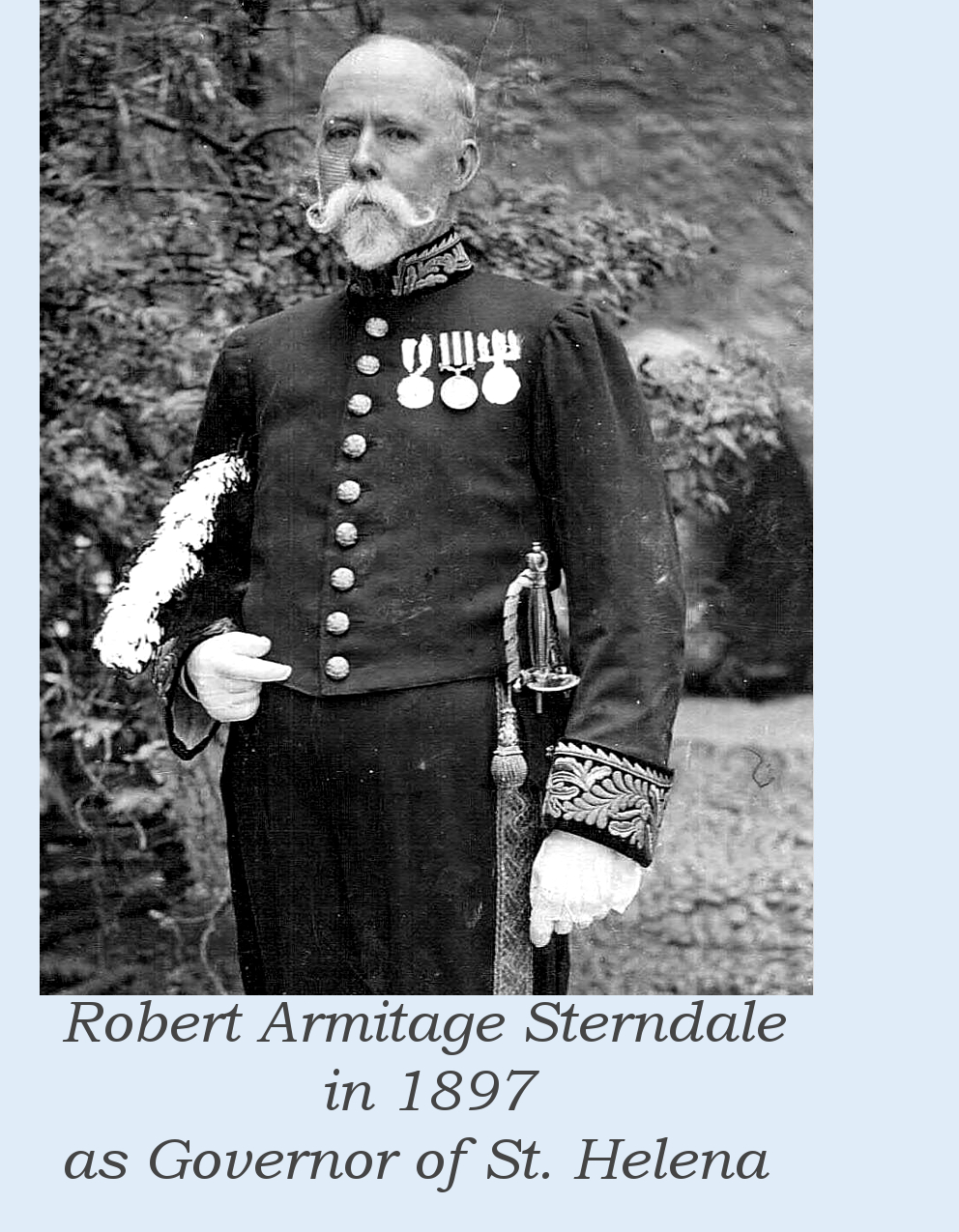
Robert Armitage Sterndale, F.R.G.S.
 Biography
BiographyRobert Armitage Sterndale (1839–1902) was born in Derbyshire, England, the fourth son of Margaret née Craufuird and William Handley Sterndale, who went to India to become an indigo planter in Tirhoot, Bihar. At the age of 17 Robert also went to India, to work for the East India Company; and he served as a volunteer officer during the Indian Rebellion of 1857. Afterwards, he entered the civil service rising to Accountant-General of Bombay then Madras. His life in India furnished the material for a travel book, Seonee: or, Camp Life on the Satpura Ridge, a book on the mammals of India, Natural history of the Mammalia of India and Ceylon, and a novel, The Afghan Knife. After he retired from the civil service he returned to service as the governor of St. Helena (7th June 1897–25th July 1902) for which he received a knighthood. While governor he installed the fountain in Castle Gardens, celebrated Queen Victoria’s Diamond Jubilee, re-built “The Run” in Jamestown, and oversaw the arrival of the Boer PoWs (1900–1902). He was home in England on sick leave when he died of a heart attack October 3, 1902.
A keen sportsman and big-game hunter, he wrote several books on natural history including the one mentioned above, on mammals of India. (Hence the “F.R.G.S.” after his name, which stands for Fellow of the Royal Geographical Society.) He was one of the first editors of the Journal of the Bombay Natural History Society. His work Seonee: or Camp Life on the Satpura Range influenced the work of Rudyard Kipling and inspired many scenes in the Jungle Book. He also contributed to newspapers, including The Asian. An accomplished artist, he made pen sketches, water colours and oil paintings of natural history subjects and was a friend of the artist John Trivett Nettleship. He illustrated two books of E. H. Aitken and contributed a few illustrations to the Lays of Hind by “Aliph Cheem” apart from his own books.
Bibliography
Seonee: or, Camp Life on the Satpura Ridge (1877)
The Afghan Knife (1879)
Natural history of the Mammalia of India and Ceylon (1884)
Denizens of the Jungle (1886)
Notes on the horns of the Indian and Central Asian Ruminantia belonging to His Highness, the Maharajah of Travancore (1889)